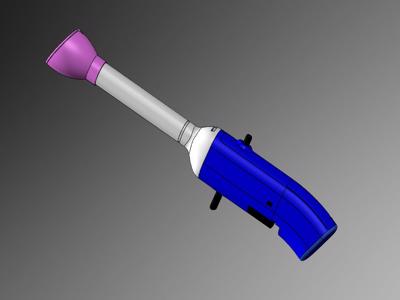The device is intended to be used as an assistive device to perform a cervical cancer screening, with the aim of diagnosing cervical cancer. The device will be used to perform a 'visual inspection with acetic acid' (VIA) procedure, which is typically performed in low-resource settings as a point-of-care method for diagnosing cervical cancer. The primary clinical benefits include:
- Improved visualization of the cervix with the aid of a digital camera, lights and processor (smartphone),
- Providing an 'all-in-one' screening platform (everything you need to perform the procedure is built into the device),
- Improved patient comfort by removing the need for a speculum,
- Reducing the number of consumables required to perform the screening, and
- Offering a digital platform onto which other technology can be built, such as machine learning to aid further in diagnosis and a mobile health app for digital records and communication with specialists.
The intended users are medical professionals that work with female health, from specialists such as gynaecologists and colposcopists, to nurses and midwives that work in clinics and mobile clinics.
The major limitation of this version of the device is that it does not have assistive diagnostic capabilities, such as a trained AI model that will help the user to make a more accurate diagnosis. Thus, the result of the screening will still be more reliant on the experience of the user, which leads to the big problem with VIA procedures - its high diagnostic variability.
